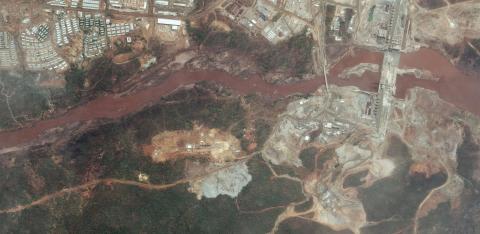With the first Turnbull Government budget this week, it is important to take stock of the impact the Coalition government has had to date on Australia's aid program.

Perhaps the largest foreign policy legacy of the Abbott Government has been the impact it had upon Australian aid. Presiding over the biggest aid cuts in Australia's history, and a now-irreversible merger of AusAID into DFAT, the aid landscape in Australia today is vastly different from 2012 when, under Labor, aid flows were at their highest ever levels and projected to continue to grow.
In many ways this has been a return to trend for Australian aid and there has already been much discussion about the impact it has had on the aid industry. What has only recently become apparent, thanks to new statistics from the OECD, is the impact these cuts have had on our international donor standings. What's been happening in Australia comes into sharp contrast when compared with the rest of the world.
Overall, 2015 was another bumper year for international aid flows, with official development assistance (ODA) from OECD countries rising for a third straight year to US$131.6 billion in 2015. After adjusting for inflation and the appreciation of the US dollar, this represented an increase of 6.9% in real terms, the largest single year increase ever achieved. Even when excluding expenditures relating to in-donor country refugee support — Australia was a trailblazer in this kind of aid financing — aid still grew by 1.7% in real terms. This is surely good news for the international aid community, and those impoverished and in desperate need whom this industry ultimately serves. One country that cannot share in this revelry is Australia.
Figure 1: Falling out of synch with the aid industry

Source: OECD QWIDS database. Dataset here.
This chart highlights the collapse in Australian aid we were all expecting, one that is completely out of synch with global aid trends. When looking at a calendar year, Australian aid peaked at US$4.8 billion in 2012 before tumbling by 19% to US$3.9 billion in 2015. Given this is a calendar year measure, it doesn't even fully encapsulate the A$1 billion cut implemented in 2015/16 budget, or the expected 5% cut in next week's budget. [fold]
Table 1: How far we've slipped
Future decline aside, Australia's international standings have already been significantly impacted by the existing cuts. In each of the measures listed in the table above, the first assessing volumes of aid, the second a country's aid generosity, and the third a country's ability to give aid, Australia has dropped three or more places. Given there are only 28 countries in the OECD donors club, this is a significant drop, especially considering Australia had the 8th largest economy and 4th highest GDP per capita of this group in 2014, according to the World Bank.
Many would argue that we shouldn't compare ourselves to other countries as we all face different and competing domestic constraints. Another approach is to look back at our performance in the past. Compared to past years, however, our current efforts do not stack up particularly well. Based on Australian budget figures and after adjusting for inflation between 1971-72 and 2017-18, Australian aid will have increased by 68% while global aid more than tripled. Between 1980-81 and 2017-18, our aid per capita will be roughly 6% lower, implying our ability to give has remained about the same or, put differently, the amount we give has kept up with population growth. However, where our aid contributions have not kept up is when compared to the growth of our economy. As the graph below shows, by 2017-18 our generosity, as measured by aid as a proportion of gross national income, will be at an all-time low in 2017-18.
As we have become wealthier, our generosity has more than halved.
Figure 2: Historical low points for Australian generosity

Source: DFAT Australian aid statistical summaries. Forward estimates based on these calculations.
For aid stakeholders and those that see Australian aid as an effective diplomatic and development tool, this is a sad state of affairs. One could argue that, given our geographic proximity to numerous developing nations, we now have an unbalanced set of foreign policy budget priorities. It could also be argued that voters, by and large, are supportive of the cuts. Our own Lowy Poll last year affirmed that sentiment, noting that 53% of Australians were in favour of the cuts. However more recent polling suggests Australians' enthusiasm for further cuts has waned, and also that the way the question is asked can have significant impact on respondents' answers, particularly when comparing Australia's effort to other countries.
Whatever the case, Australia's international standings in the aid community are falling, and along with them our capacity to influence the regional aid architecture and global development debates. Not to mention the capacity of the government to do good in the region.
We'll wait to see this week how much further pain the sector will suffer in the year ahead. I'll be taking a more forensic look at the 2016/17 budget figures as they are revealed, so keep your eyes glued to The Interpreter.
Photo courtesy of Flickr user Department of Foreign Affairs and Trade.
